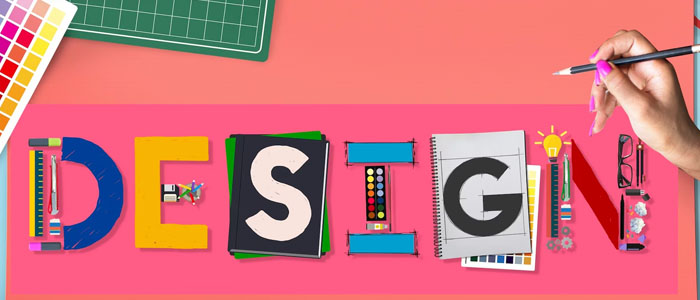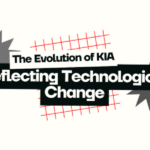Graphic design is more popular in our lives than many people think, from the billboards you get to see on the way to work, to the brand logos and the websites you visit. Since graphic designing has existed for a long time, it isn’t easy to imagine a world without it.
Beginning with print design and progressing to digital format, graphic design has seen several development stages. During the print period, graphic designers created designs printed on paper or other materials using real instruments like pencils, pens, and paint. Graphic designers started utilizing programs like Adobe Illustrator and Photoshop to develop and edit designs with the development of computers and digital technologies.
Graphic design has a long history.
In this blog post, let’s examine how the designing field has changed through time and impacted our lives.
Earliest Forms of Graphic Design:
Although many people think graphic design is digital, it existed long before the technology was developed. In actuality, visual interaction has roots that trace back to earlier times.
Looking for an Affordable
Logo Design Services
Get in touch with our 24/7 available representatives now!
Chat With us to avail 30% OFF
Printing and Paper:
It is said that the Chinese may have discovered the first printing forms in the early sixth century CE. China primarily used woodblock, or printing, which included imprinting patterns in ink onto a raised carved surface. The paper was created approximately in 105 CE, and this innovation has also been credited to the Chinese. Naturally, this was a significant turning point in graphic design history.
Evolution of Written Language:
Writing development is another important point in the history of graphic design. Around 3300 to 3000 BCE, the Sumerians (belonging to Mesopotamia- a land between the two named Tigris and Euphrates rivers in Iraq) have been credited with developing one of the earliest written languages. We still use the idea that these first writing systems mostly comprised symbols and images representing objects.
Cave Paintings:
According to historians, Graphic design has its roots in prehistoric cave drawings from around 38,000 BCE. Most of these paintings, which can be seen worldwide, show components associated with hunting, such as animals and hunting equipment. Although the exact reason for these cave drawings is unknown, humans used them to communicate visually.
Graphic Design in the Renaissance and Industrial Era:
The Industrial Revolution and the Renaissance witnessed some of the most significant and advanced developments in graphic design. However, the printing press is the most well-known and popular among them. These developments include:
Discovery of the Printing Press:
The printing press was created in 1439 by German inventor Johannes Gutenberg, who also brought variety of portable printing, and typing equipment to Europe. The Gutenberg press made literature (and subsequently literacy in general) far more widely available to the general public. Printed books were used instead of expensive, handcrafted manuscript books since they were far more readily available and inexpensive.
Advertisements and Logos:
Logos and print advertisements are two examples of more commercial design applications made possible by the Gutenberg press. The first print advertising existed in the coranto’s invention in the 1600s, even though the first logos were created in the late 1400s. Corantos were booklets that served as an early version of newspapers and provided news, information, and the first printed advertisements.
Chromolithography and Lithography:
The Industrial Revolution saw the development of several new design-related technologies, with lithography being one of the most widely recognized designing technology. Lithography, a printing first used in 1798, involves drawing a pattern on a flat surface, like a stone, and then printing it on a piece of paper. Lithography evolved with the development of chromolithography, or colored lithographs, in the second part of the 19th century.
Rise of Visual Propaganda:
The early twentieth century were when graphic design began to develop, particularly during World Wars I and II. Posters in particular became a means of expression. During this time, signs commonly used were simple, to-the-point phrases and corresponding graphics.
After the Second World War, poster art declined but returned during the Civil Rights Movement and the Vietnam War. Using posters to spread messages and get people’s attention has become common.
Advertising Boom:
TVs were once only found in the houses of the wealthy people. However, when televisions became part in the ordinary family home as well, advertisements on television started to influence how the viewers perceived design. It evolved into a brand-new genre of storytelling, one used to persuade viewers to purchase the goods they saw on TV.
Effective Art Movements:
Graphic design was significantly influenced by several art movements throughout the 20th century, both in the US and worldwide. These movements include:
Bauhaus: A primary trend in art and design that included geometric designs, minimalism, and straightforward typography, began in Germany in 1919.
Pop Art: Pop Art was a major art trend that took place mostly in America and England throughout the 1950s and 1960s and was glorified because it supported pop culture. It had many vibrant shades and shapes. (Consider comic book fashion)
Postmodernism: Postmodernism is simply the polar opposite of modernism. The postmodern movement emphasized a more complicated, ambiguous aesthetic designs, unlike modernist designs emphasized simplicity and idealism.
The Digital Era:
For graphic designers, the digital era marked the start of a brand-new period. The initial version of Photoshop was released in 1990, and its introduction significantly changed designers’ capacity to experiment with various per-technologically nonexistent techniques.
The strength of graphic design technologies increased during the 2000s. It began showing up on portable electronics like tablets and cellphones. As a result, several new visual design fields were established, including web design, UX/UI design, and interactive design.
Future of Graphic Design?
The field of graphic design is always expanding with new innovations and technology emerging on daily basis. Although it’s impossible to predict what will happen to graphic design in the future, many designers think that the user experience will continue to be a top priority. Strategies may become even more dynamic and individualized.
Whatever direction graphic design takes in the future, Designers must be adaptable and open to learning new skills as the industry develops.
Conclusion:
The transition of graphic design from print to digital has significantly influenced the methods and instruments used by designers. Designers now have additional options due to the development of computers and digital software, which has also improved how well the techniques works and cost efficiency.





